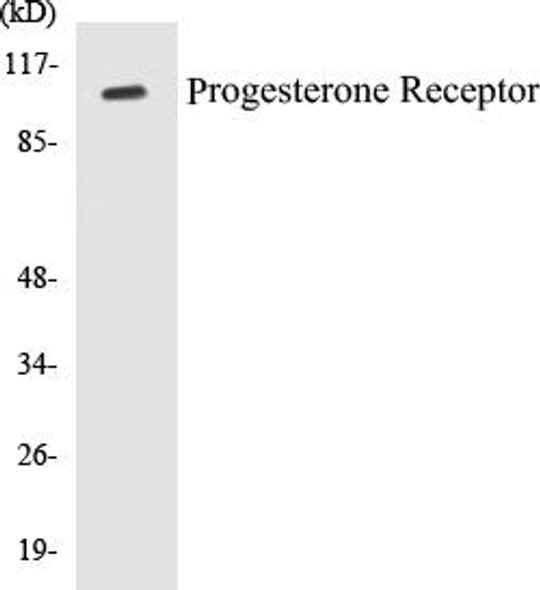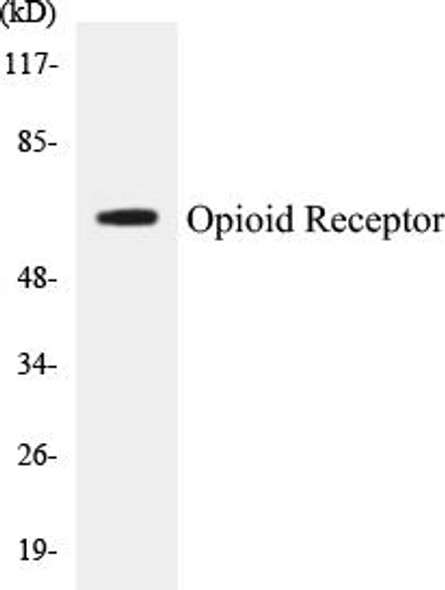Epigenetics and Nuclear Signaling
Vitamin D Receptor Colorimetric Cell-Based ELISA Kit
- SKU:
- CBCAB00207
- Product Type:
- ELISA Kit
- ELISA Type:
- Cell Based
- Research Area:
- Epigenetics and Nuclear Signaling
- Reactivity:
- Human
- Detection Method:
- Colorimetric
Description
| Product Name: | Vitamin D Receptor Colorimetric Cell-Based ELISA |
| Product Code: | CBCAB00207 |
| ELISA Type: | Cell-Based |
| Target: | Vitamin D Receptor |
| Reactivity: | Human |
| Dynamic Range: | > 5000 Cells |
| Detection Method: | Colorimetric 450 nmStorage/Stability:4°C/6 Months |
| Format: | 96-Well Microplate |
The Vitamin D Receptor Colorimetric Cell-Based ELISA Kit is a convenient, lysate-free, high throughput and sensitive assay kit that can detect Vitamin D Receptor protein expression profile in cells. The kit can be used for measuring the relative amounts of Vitamin D Receptor in cultured cells as well as screening for the effects that various treatments, inhibitors (ie siRNA or chemicals), or activators have on Vitamin D Receptor.
Qualitative determination of Vitamin D Receptor concentration is achieved by an indirect ELISA format. In essence, Vitamin D Receptor is captured by Vitamin D Receptor-specific primary antibodies while the HRP-conjugated secondary antibodies bind the Fc region of the primary antibody. Through this binding, the HRP enzyme conjugated to the secondary antibody can catalyze a colorimetric reaction upon substrate addition. Due to the qualitative nature of the Cell-Based ELISA, multiple normalization methods are needed:
| 1. | A monoclonal antibody specific for human GAPDH is included to serve as an internal positive control in normalizing the target absorbance values. |
| 2. | Following the colorimetric measurement of HRP activity via substrate addition, the Crystal Violet whole-cell staining method may be used to determine cell density. After staining, the results can be analysed by normalizing the absorbance values to cell amounts, by which the plating difference can be adjusted. |
| Database Information: | Gene ID: 7421, UniProt ID: P11473, OMIM: 277440/601769/607948, Unigene: Hs.524368 |
| Gene Symbol: | VDR |
| Sub Type: | None |
| UniProt Protein Function: | VDR: Nuclear hormone receptor. Transcription factor that mediates the action of vitamin D3 by controlling the expression of hormone sensitive genes. Regulates transcription of hormone sensitive genes via its association with the WINAC complex, a chromatin-remodeling complex. Recruited to promoters via its interaction with the WINAC complex subunit BAZ1B/WSTF, which mediates the interaction with acetylated histones, an essential step for VDR-promoter association. Plays a central role in calcium homeostasis. Defects in VDR are the cause of rickets vitamin D- dependent type 2A (VDDR2A). A disorder of vitamin D metabolism resulting in severe rickets, hypocalcemia and secondary hyperparathyroidism. Most patients have total alopecia in addition to rickets. Belongs to the nuclear hormone receptor family. NR1 subfamily. |
| UniProt Protein Details: | Protein type:DNA-binding; Transcription factor; Nuclear receptor Chromosomal Location of Human Ortholog: 12q13.11 Cellular Component: nucleoplasm; nucleus; receptor complex Molecular Function:retinoid X receptor binding; protein binding; DNA binding; zinc ion binding; sequence-specific DNA binding; steroid hormone receptor activity; vitamin D3 receptor activity; transcription factor activity Biological Process: lactation; transcription initiation from RNA polymerase II promoter; positive regulation of apoptosis involved in mammary gland involution; cell morphogenesis; decidualization; negative regulation of transcription from RNA polymerase II promoter; signal transduction; intestinal absorption; cellular calcium ion homeostasis; negative regulation of cell proliferation; calcium ion transport; steroid hormone mediated signaling; positive regulation of transcription from RNA polymerase II promoter; gene expression; negative regulation of transcription, DNA-dependent; skeletal development; positive regulation of keratinocyte differentiation Disease: Vitamin D-dependent Rickets, Type 2a; Osteoporosis |
| NCBI Summary: | This gene encodes the nuclear hormone receptor for vitamin D3. This receptor also functions as a receptor for the secondary bile acid lithocholic acid. The receptor belongs to the family of trans-acting transcriptional regulatory factors and shows sequence similarity to the steroid and thyroid hormone receptors. Downstream targets of this nuclear hormone receptor are principally involved in mineral metabolism though the receptor regulates a variety of other metabolic pathways, such as those involved in the immune response and cancer. Mutations in this gene are associated with type II vitamin D-resistant rickets. A single nucleotide polymorphism in the initiation codon results in an alternate translation start site three codons downstream. Alternative splicing results in multiple transcript variants encoding different proteins. [provided by RefSeq, Feb 2011] |
| UniProt Code: | P11473 |
| NCBI GenInfo Identifier: | 137617 |
| NCBI Gene ID: | 7421 |
| NCBI Accession: | P11473.1 |
| UniProt Secondary Accession: | P11473,Q5PSV3, B2R5Q1, G3V1V9, |
| UniProt Related Accession: | P11473 |
| Molecular Weight: | |
| NCBI Full Name: | Vitamin D3 receptor |
| NCBI Synonym Full Names: | vitamin D (1,25- dihydroxyvitamin D3) receptor |
| NCBI Official Symbol: | VDR |
| NCBI Official Synonym Symbols: | NR1I1; PPP1R163 |
| NCBI Protein Information: | vitamin D3 receptor; 1,25-dihydroxyvitamin D3 receptor; vitamin D nuclear receptor variant 1; nuclear receptor subfamily 1 group I member 1; protein phosphatase 1, regulatory subunit 163 |
| UniProt Protein Name: | Vitamin D3 receptor |
| UniProt Synonym Protein Names: | 1,25-dihydroxyvitamin D3 receptor; Nuclear receptor subfamily 1 group I member 1 |
| Protein Family: | Vitamin D3 receptor |
| UniProt Gene Name: | VDR |
| UniProt Entry Name: | VDR_HUMAN |
| Component | Quantity |
| 96-Well Cell Culture Clear-Bottom Microplate | 2 plates |
| 10X TBS | 24 mL |
| Quenching Buffer | 24 mL |
| Blocking Buffer | 50 mL |
| 15X Wash Buffer | 50 mL |
| Primary Antibody Diluent | 12 mL |
| 100x Anti-Phospho Target Antibody | 60 µL |
| 100x Anti-Target Antibody | 60 µL |
| Anti-GAPDH Antibody | 60 µL |
| HRP-Conjugated Anti-Rabbit IgG Antibody | 12 mL |
| HRP-Conjugated Anti-Mouse IgG Antibody | 12 mL |
| SDS Solution | 12 mL |
| Stop Solution | 24 mL |
| Ready-to-Use Substrate | 12 mL |
| Crystal Violet Solution | 12 mL |
| Adhesive Plate Seals | 2 seals |
The following materials and/or equipment are NOT provided in this kit but are necessary to successfully conduct the experiment:
- Microplate reader able to measure absorbance at 450 nm and/or 595 nm for Crystal Violet Cell Staining (Optional)
- Micropipettes with capability of measuring volumes ranging from 1 µL to 1 ml
- 37% formaldehyde (Sigma Cat# F-8775) or formaldehyde from other sources
- Squirt bottle, manifold dispenser, multichannel pipette reservoir or automated microplate washer
- Graph paper or computer software capable of generating or displaying logarithmic functions
- Absorbent papers or vacuum aspirator
- Test tubes or microfuge tubes capable of storing ≥1 ml
- Poly-L-Lysine (Sigma Cat# P4832 for suspension cells)
- Orbital shaker (optional)
- Deionized or sterile water
*Note: Protocols are specific to each batch/lot. For the correct instructions please follow the protocol included in your kit.
| Step | Procedure |
| 1. | Seed 200 µL of 20,000 adherent cells in culture medium in each well of a 96-well plate. The plates included in the kit are sterile and treated for cell culture. For suspension cells and loosely attached cells, coat the plates with 100 µL of 10 µg/ml Poly-L-Lysine (not included) to each well of a 96-well plate for 30 minutes at 37°C prior to adding cells. |
| 2. | Incubate the cells for overnight at 37°C, 5% CO2. |
| 3. | Treat the cells as desired. |
| 4. | Remove the cell culture medium and rinse with 200 µL of 1x TBS, twice. |
| 5. | Fix the cells by incubating with 100 µL of Fixing Solution for 20 minutes at room temperature. The 4% formaldehyde is used for adherent cells and 8% formaldehyde is used for suspension cells and loosely attached cells. |
| 6. | Remove the Fixing Solution and wash the plate 3 times with 200 µL 1x Wash Buffer for five minutes each time with gentle shaking on the orbital shaker. The plate can be stored at 4°C for a week. |
| 7. | Add 100 µL of Quenching Buffer and incubate for 20 minutes at room temperature. |
| 8. | Wash the plate 3 times with 1x Wash Buffer for 5 minutes each time. |
| 9. | Add 200 µL of Blocking Buffer and incubate for 1 hour at room temperature. |
| 10. | Wash 3 times with 200 µL of 1x Wash Buffer for 5 minutes each time. |
| 11. | Add 50 µL of 1x primary antibodies (Anti-Vitamin D Receptor Antibody and/or Anti-GAPDH Antibody) to the corresponding wells, cover with Parafilm and incubate for 16 hours (overnight) at 4°C. If the target expression is known to be high, incubate for 2 hours at room temperature. |
| 12. | Wash 3 times with 200 µL of 1x Wash Buffer for 5 minutes each time. |
| 13. | Add 50 µL of 1x secondary antibodies (HRP-Conjugated AntiRabbit IgG Antibody or HRP-Conjugated Anti-Mouse IgG Antibody) to corresponding wells and incubate for 1.5 hours at room temperature. |
| 14. | Wash 3 times with 200 µL of 1x Wash Buffer for 5 minutes each time. |
| 15. | Add 50 µL of Ready-to-Use Substrate to each well and incubate for 30 minutes at room temperature in the dark. |
| 16. | Add 50 µL of Stop Solution to each well and read OD at 450 nm immediately using the microplate reader. |
(Additional Crystal Violet staining may be performed if desired – details of this may be found in the kit technical manual.)






